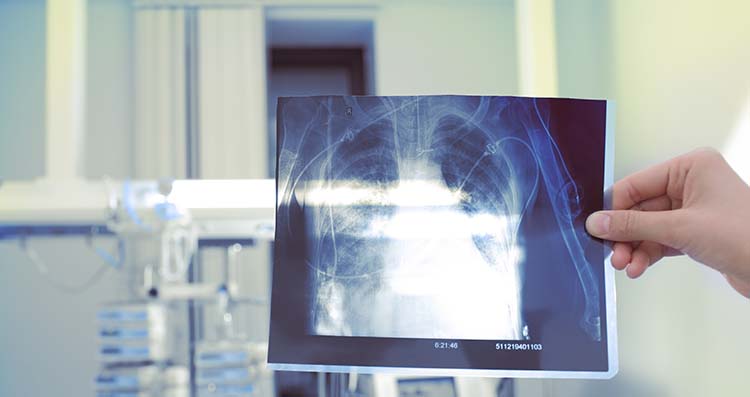Mensura tests new method for early detection of silicosis
Mensura joins forces with University Antwerp (UA), Antwerp University Hospital (UZA) and Oost Limburg Hospital (ZOL) in the SiBRe study. Together, we are researching a new breath test that is faster to determine the risk of silicosis, also known as black lung disease, than radiological examination. We hope to track down the condition more quickly in order to mitigate the damage to the patients' lungs.
Silicosis is a lung disease caused by inhaling quartz dust. These are small dust particles that occur in rocky materials such as concrete, granite, marble, composite and brick.
Historically, silicosis is a miners’ disease (hence the reference to black lungs). And yet, closure of the mines did not eliminate the disease. After all, construction or industry workers are exposed to this harmful dust on a regular basis as well.

What are the symptoms of silicosis?
The main symptoms are an irritating cough and shortness of breath on exertion and even at rest. However, these symptoms usually appear by the time patients have already suffered lung damage. This is why early detection of the risk on silicosis is key, even before complaints or symptoms arise.
Is silicosis treatable?
Although pulmonologists can relieve symptoms with medication, silicosis is an incurable condition. As such, prevention is key. For example, by having employees wear a special dust mask during high-risk operations to limit exposure to quartz dust as much as possible.
Is the condition diagnosed despite this type of measure? The employee must leave the high-risk work environment immediately.
Why is a new test useful?
With the current detection technique - a three-yearly photograph of the lungs and a lung function test - the condition is often diagnosed late, resulting in permanent lung damage and respiratory symptoms. In addition, patients are repeatedly exposed to ionising radiation, which means this photographic detection method is subjecting patients to additional health risks.
‘The breath test used in the SiBRe study is faster and much less invasive. A sample of our test subjects’ exhaled air is analysed for the presence of specific substances, so-called volatile organic compounds (VOCs)’, according to Nele van Loon, occupational physician with Mensura and a researcher in this project.
‘Long-term inhalation of quartz dust can cause chronic inflammation in the lungs, which may be reflected in changes in the composition of exhaled air. We hope for this study to demonstrate that by the end of 2024.’
‘If our study yields the expected results, this simple breath test could help occupational healthcare practice detect exposure risk to quartz more quickly than current detection techniques. In that case, we would be able to avoid severe lung damage due to inhalation of quartz dust in the future.’
Watch TV Limburg’s coverage here: ZOL in Genk develops test to detect dust lung more quickly - TV Limburg.